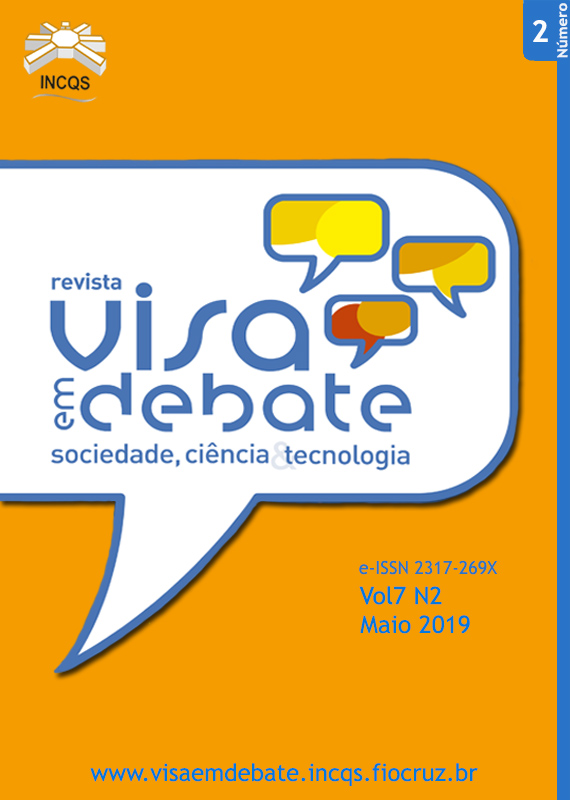Fresh frozen plasma: pharmaceutical input for the production of plasma-derived medicines
DOI:
https://doi.org/10.22239/2317-269x.01283Keywords:
Frozen Fresh Plasma, Hemotherapy Services, Recovery of Factor VIII ContentAbstract
Introduction: In Brazil, hemotherapy was started as a medical specialty in the 1940s in the Rio de Janeiro and São Paulo axis with the inauguration of the first Blood Bank at the Fernandes Figueira Institute. As a governmental initiative, Law n. 1,075/1950/MS, which provides for the voluntary donation of blood, was promulgated, culminating with the Law n. 10,205/2001, which regulated paragraph 4 of article 199 of the Federal Constitution, regarding collection, processing, storage, distribution and application of blood and its components. Among the components obtained in the Hemotherapy Services, we can highlight the frozen fresh plasma (FFP) that can be transfused and, when becoming a surplus of the therapy, continue to be used to produce industrialized blood products. Objective: This study intends to demonstrate the most relevant aspects regarding the recovery of factor VIII content, in the FFP units collected in 72 Hemotherapy Services visited in the country, aiming at its safe and effective use both for therapeutic use and as a pharmaceutical input in the production of blood products. Method: The methodology adopted included five steps: Elaboration and validation of the questionnaire applied; Selection of Hemotherapy Services to be visited; Analysis of quality indicators according to the Donabedian Triad; Collection, packaging and transport of FFP units; Analysis of the Factor VIII content in the FFP units collected during the technical visit during the period from 2013 to 2015. Results: Among the results obtained, it is important to highlight the concentration of factor VIII (IU/mL), in the FFP units, with the following results: mean 0.68; standard deviation 0.32; coefficient of variation 47.1%, confidence interval 0.64 to 0.71. Conclusions: factor VIII content greater than or equal to 0.70 IU/mL was found in 38.5% of FFP units, as specified in the Brazilian Pharmacopoeia, which can and should be used as a pharmaceutical input in the production of blood products. It was also found a disposal of approximately 500 million IU/mL of factor VIII, which represents 83.0% of the annual acquisition by the Ministry of Health of Concentrate of factor VIII for medical uses. Such use could generate significant savings in public coffers.
Downloads
Downloads
Published
Issue
Section
License
Copyright (c) 2019 Health Surveillance under Debate: Society, Science & Technology (Vigilância Sanitária em Debate: Sociedade, Ciência & Tecnología) – “Visa em Debate”

This work is licensed under a Creative Commons Attribution-NonCommercial-NoDerivatives 4.0 International License.
COPYRIGHT ALLOWANCE The author (s) hereinafter designated as the ASSIGNOR hereby assign and transfer, free of charge, the ownership of the copyrights related to this ARTICLE to the Vigilância Sanitária em Debate: Sociedade, Ciência & Tecnologia (Health Surveillance under Debate: Society, Science & Technology) – Visa em Debate, represented by FUNDAÇÃO OSWALDO CRUZ, established at Av. Brasil, nº 4365, Manguinhos, Rio de Janeiro, RJ, Brazil, CEP 21045-900, under the conditions set out below: (a) The terms and conditions set forth in this Agreement shall apply to the following: 1. The ASSIGNOR declares that they s(he) is (are) the author (s) and owner (s) of the copyrighted property of the ARTICLE submitted. 2. The ASSIGNOR declares that the ARTICLE does not infringe the copyrights and / or other property rights of third parties, that the disclosure of images (if any) has been authorized and that they s(he) assume(s) full moral and / or property liability for its content, before third parties. 3. THE ASSIGNOR assigns and transfers all copyrights relating to the ARTICLE to the ASSIGNEE, especially the rights of editing, publication, translation into another language and reproduction by any process or technique. The ASSIGNEE becomes the exclusive owner of the rights related to the ARTICLE, and any reproduction, totally or partially, is prohibited in any other means of publicity, printed or electronic, without prior written authorization from the ASSIGNEE. 4. The assignment is free and, therefore, there will be no remuneration for the use of the ARTICLE by the ASSIGNEE.







